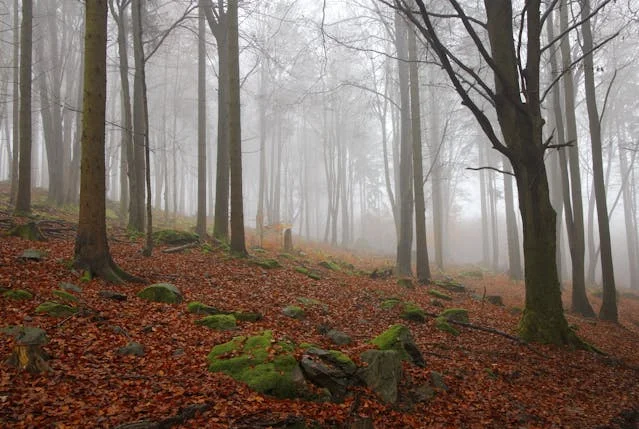The ninth month of the Punjabi year is Maghar (ਮੱਘਰ), typically falls in November and December (mid-November to mid-December). The weather patterns change from pleasant to cold as the month progresses.
The early days, which fall in November, are lovely with dry weather, but nights are cool. Plants and trees shed leaves and create a beautiful impact on nature. It looks like nature is taking a rest. For some people, this phase may be gloomy or somewhat sad but all this is part of a natural cycle.
In December, the temperature decreases, and the cold increases. It is the time to unpack warm clothes and bring them into the closet. Farmers take care of the sown Rabi, which needs good irrigation for growth. They should be protected from weeds and frost in early December. So, during this month, farmers are often busy with irrigation and fertilisation activities.
Maghar Calendar 2025 (ਮੱਘਰ)
Key Events of ਮੱਘਰ
- Shaheedi of Bhai Mati Das and Bhai Sati Das
- Gur Gadi of Guru Gobind Singh Ji
- Sahibzada Fateh Singh Ji
The Sikh community observes many religious and cultural events in ਮੱਘਰ. Some events include Shaheedi of Bhai Mati Das and Bhai Sati Das, Gur Gadi of Guru Gobind Singh Ji, and the birthday of Sahibzada Fateh Singh Ji. All other important events are listed below in tables. Check out the Significant Days of Desi Months to get the complete list of this year’s events.
Significant Dates of ਮੱਘਰ
| Event | Gregorian Date | Day |
|---|---|---|
| EventSangrand | Date16 November 2025 | DaySunday |
| EventPuranmashi | Date4 December 2025 | DayThursday |
| EventMasya | Date20 November 2025 | DayThursday |
| EventPanchmi | Date25 November 2025 | DayTuesday |
| EventDashmi | Date30 November 2025 | DaySunday |
Gurpurab Dates of ਮੱਘਰ
| Gurpurab | Gregorian Date | Day |
|---|---|---|
| GurpurabGurgaddi Shri Guru Gobind Singh Ji | Date23 November 2025 | DaySunday |
| GurpurabMartyrdom Day Guru Teg Bahadur Ji | Date25 November 2025 | DayTuesday |
| GurpurabAkal Chalana Bhai Mardana Ji | Date28 November 2025 | DayFriday |
| GurpurabJanam Sahibzada Zorawar Singh Ji | Date30 November 2025 | DaySunday |
| GurpurabJanam Sahibzada Fateh Singh Ji | Date14 December 2025 | DaySunday |

Interesting Facts about ਮੱਘਰ
- The Month of Drying Cold Winds
- ਮੱਘਰ marks the arrival of cold and dry winds as winter begins to settle in. The once green fields of Punjab start turning pale, and the air feels crisp, especially in the mornings and evenings.
- Falling Leaves & Dormant Trees
- By this time, many trees start shedding their leaves, creating a quiet, peaceful atmosphere in villages and towns. The sight of bare trees and fallen leaves reminds people that nature is preparing for the deep winter months.
- Shorter Days, Longer Nights
- With the winter solstice approaching, days become noticeably shorter, and nights grow longer. By evening, mist often covers the fields, and the sunsets appear more golden, creating a calm and serene vibe across the countryside.
- Bonfires & Warmth Gatherings
- As nights become chilly, families and farmers sit around bonfires to stay warm, share stories, and enjoy simple foods like roasted peanuts, rewari, and gajak. It’s a time of community bonding, where elders narrate folk tales to children under the starry sky.
5. The Superstition of Maghar
- In ancient times, there was a superstition that dying in ਮੱਘਰ meant missing out on spiritual salvation. Many people believed that passing away in places like Kashi (Varanasi) ensured moksha (liberation), while ਮੱਘਰ was considered unlucky.
6. The First Signs of Fog
- By the end of ਮੱਘਰ, thick fog starts covering the fields and roads, making early mornings and late evenings feel mysterious. Farmers wake up before sunrise to check on their fields, often wrapped in heavy woolen shawls.
7. A Time for Simple, Warm Foods
- As the cold settles in, people start cooking warm, hearty meals like sarson da saag (mustard greens) and makki di roti (cornbread). Hot milk with turmeric, ginger tea, and jaggery sweets become essential in every home.
Conclusion
We can conclude that Maghar (ਮੱਘਰ) is a time of transition from pleasant days to cold nights, and it signals the arrival of winter. This month is important for farmers as they care for their crops during the chilly weather. With various significant events for the Sikh community, ਮੱਘਰ is a time for reflection and celebration.
Want to know the Masya date of next month? Check out the Significant Dates of Poh.

